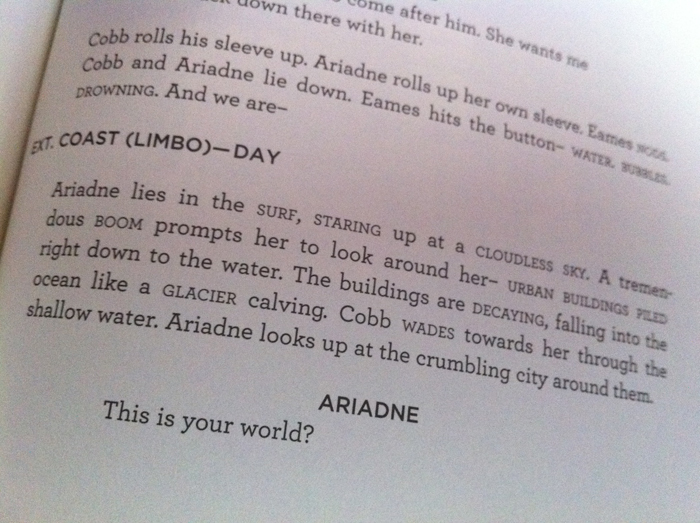Yeah, I don't know. In real life, you definitely can't just defibrillate someone who's been shot and expect it to work, so... I don't have any clue. I chalk this one up to it being a movie, like the projections being such bad shots. In movies, defibrillators always work and the bad guys never know how to fire a gun. That's just how it is.Anita18 wrote:One question I can't really find a good answer for is how Fischer is able to wake up in level 3 and carry on like he no longer has two bullets in his body.Eames is a very good forger so I guess that he was able to remove them without Fischer remembering but....anyone else have an explanation?
Yusuf was probably not as experienced a dreamer as Eames which is why they could not have done the same to Saito in level 1.
moonwalkerwiz wrote:Thanks to everyone. These posts are really clearing things up. But here's my question: How can the shared experience device work in a dream when it doesn't have any real properties? And if it DOES have real properties in a dream, who thinks of these properties (thus, who thinks of the device in a dream? Who creates the device in a dream?)
And, since it's just a made-up dream device in a dream, what if someone didn't believe it is real? Would that hinder the device from working?
I imagine that anyone can bring the device into the dream. Like guns and totems, the device is an object, and everyone within the dream seems to be able to dream up objects ("You mustn't be afraid to dream a little bigger, darling."). However, I can't understand why the team members didn't use this ability more often.
One reason may be that, although participants in the dream can bring anything they want INTO the dream (like totems, clothes, guns, etc.), they are unable to change the dream on the fly. That particular ability is reserved for the dreamer. In addition, it seems that all of the objects within the dream must be "routed" through the dreamer in some way, as if the subconscious of a dream participant requests an object and the dreamer is left to recreate that object. Certainly, this would make sense, given the ability of totems to behave the way they do.
As for the properties of the suitcase device, I don't really know why they can't modify them within the dream. Maybe there's some sort of restriction on the ways that people can manipulate shared dreams within the shared dreams? But I don't know. I can't think up a good explanation for this one. It's just one of those things, like the defibrillator above, that requires suspension of disbelief.
I agree with this analysis. While typical totems are supposed to differentiate between your own dreams and others' dreams, Dom's totem is implied to be different; his behaves differently, depending on whether it's in a dream or reality.theweatherman wrote:This question is rather weighted and is oft debated already on these forums. I believe that there is something special about Cobb's totem that spins non-stop in any dream no matter what and will spin normally in the real world.moonwalkerwiz wrote:Thanks for clarifying that. Here's another question:
How does the totem actually work? For example, Cobb's totem spins infinitely when he's in a dream world. Is that an inherent property of the totem? Or does Cobb command it to spin indefinitely? (If he can command it, then does that mean he can command anything in the dream world to do as he wishes?) If your totem is a chess piece, like Ariadne's, how can such a totem tip you off on the nature of the world you're in? It doesn't really spin like Cobb's. I mean, how is a totem different from any item with you or piece of clothing that you wear in a dream world?
However the rest of the totems just have to be something that is personal enough that if it was recreated by someone else in a dream, they would recognize it as a fake. It would be similar to when Saito recognized that the carpet wasn't his own.
Here's how a typical totem works: You have an object that only you know intimately. In your own dreams, you can create that object just fine. However, if you're in a dream that someone else has designed, they'll attempt to recreate that object (like Saito's carpet), and miss little nuances. This way, you can tell whether you're in your own dream/reality or a shared dream. In shared dreams (except for those in which you're the dreamer), your totem will behave in wonky ways.
I've addressed this previously, but I believe that kicks can be resisted. This is just my take on it, but I believe that's why Arthur resisted the van's kick in level 2 and why Dom was able to resist the collapsing building's kick in level 4.donthemen wrote:My question is, how did Arthur not wake up from L2 (hotel) when the van hit the guard rail in L1 (rainy LA), which was supposed to be the kick for everyone?
I understand everyone else missing it since they were in L3 (snow fortress), but Arthur seemed immune to it somehow (we do see him fly through the hallway upon impact, though).


